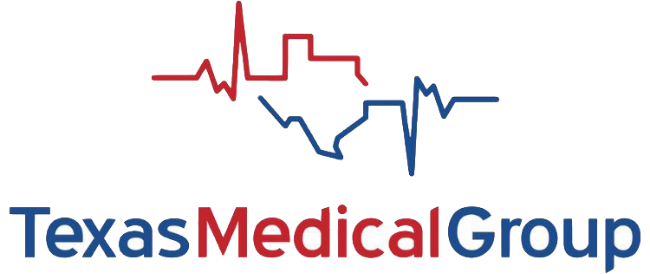
Understanding Management Liability Insurance
Today’s business leaders face numerous legal and regulatory pressures. Allegations of mismanagement (e.g., poor oversight, regulatory noncompliance or breach of duty) can arise from a wide range of stakeholders—including employees, shareholders, customers and regulatory bodies—who are increasingly willing to pursue litigation when governance falls short. Even with robust governance and compliance frameworks, unforeseen claims can still emerge, threatening an organization’s financial stability, reputation and leadership continuity.
Fortunately, management liability insurance can help mitigate the financial impact of claims brought against directors, officers and other key decision-makers for alleged wrongful acts. Applicable to public, private and nonprofit entities alike, this suite of coverage provides financial support for legal defense costs, settlements and judgments arising from lawsuits, regulatory investigations and other management-related exposures.
This article explores the importance of management liability insurance, breaks down its key components and explains how coverage is typically structured.
Why Management Liability Insurance Matters
There are several reasons why management liability insurance is essential for protecting business leaders and the organizations they serve, including:
- Personal asset protection—Legal costs can quickly escalate when claims arise from the actions of business leaders. Without proper coverage, directors, officers and other key decision-makers may face personal liability for defense fees, settlements and judgments. Management liability insurance protects these individuals financially, allowing them to focus on driving company growth without the looming threat of personal liability.
- Talent attraction—High-caliber directors, executives and trustees are more likely to join a company when they know they’re financially protected from personal liability. As such, management liability insurance enhances an organization’s ability to attract and retain top talent, helping it to stand out in a competitive leadership landscape.
- Litigation cost control—Legal action against a company’s leadership can be financially and reputationally damaging, even if the case is eventually dismissed. Management liability insurance helps protect company reserves and leaders’ personal assets and reassures stakeholders that the organization is well-governed and proactive about risk.
Components of Management Liability Insurance
Management liability insurance typically combines several distinct but complementary types of coverage, including the following:
Directors and Officers Liability Insurance
Directors and officers liability (D&O) insurance financially protects organizations and their senior leaders by covering losses when directors or officers are held personally liable for alleged wrongful acts. Common claims include breach of fiduciary duty, misrepresentation and regulatory violations. D&O coverage is relevant across all sectors: public companies can be exposed to shareholder litigation and regulatory scrutiny; private companies may encounter claims from investors, competitors or employees; and nonprofits are subject to many of the same risks as for-profit entities but often lack the financial resources to absorb the cost of legal defense or settlements. D&O policies are typically structured into three components:
- Side A provides direct coverage to individual directors and officers when the organization is unable to or legally prohibited from indemnifying them (e.g., in insolvency scenarios).
- Side B reimburses the organization when it indemnifies directors and officers for covered claims, helping to protect corporate assets.
- Side C covers the organization itself in securities-related claims, particularly relevant for public companies named alongside their executives in litigation. For private companies, entity coverage is often broader and may include other management-related claims.
Employment Practices Liability Insurance
Employment practices liability insurance (EPLI) covers claims arising from employment-related issues such as harassment, discrimination, wrongful termination and other alleged violations of employee rights. It includes coverage for legal defense costs and settlements, regardless of claim validity. EPLI is relevant for organizations of all types and sizes, as any company can be exposed to employment-related disputes. Coverage typically extends to claims brought by current employees, former employees, and in some cases, third parties if third-party EPLI is specifically purchased as an endorsement.
Fiduciary Liability Insurance
Fiduciary liability insurance protects organizations and fiduciaries that manage employee benefit and retirement plans (e.g., 401(k)s, health, dental, life and disability plans) from claims of mismanagement or breach of fiduciary duty. Allegations could include poor investment of plan assets, enrollment errors (e.g., failure to enroll an eligible employee), failure to follow plan documents or the provision of inaccurate advice. This coverage typically responds to civil claims related to breach of fiduciary duties under the Employee Retirement Income Security Act and similar laws. It generally does not cover criminal acts or regulatory penalties unless explicitly stated in the policy. Fiduciary liability insurance can cover legal defense costs, settlements and damages resulting from honest mistakes, negligence or oversight. This coverage is beneficial for any organization or individual that acts as a fiduciary for employee benefit plans.
Other Coverage
Other policies that can broaden coverage include:
- Commercial crime insurance—While many components of management liability insurance provide financial protection against errors, omissions and mismanagement, they typically do not cover losses resulting from criminal acts. Commercial crime insurance is usually a separate policy, though some insurers may package it alongside management liability coverage. It reimburses organizations for losses caused by a range of business-related crimes, such as employee theft, embezzlement, fraud, forgery and other dishonest acts committed by employees or external parties (e.g., corrupt contractors or vendors).
- Kidnap, ransom and extortion insurance—This coverage provides financial protection and crisis support when executives or key personnel are targeted (e.g., while traveling or working abroad). Kidnap, ransom and extortion coverage is especially important for multinational corporations and global nonprofits. It may include reimbursement for ransom or extortion payments, negotiation and legal costs, and access to specialized crisis management services
Components of Management Liability Insurance
Management liability insurance typically combines several distinct but complementary types of coverage, including the following:
Directors and Officers Liability Insurance
Directors and officers liability (D&O) insurance financially protects organizations and their senior leaders by covering losses when directors or officers are held personally liable for alleged wrongful acts. Common claims include breach of fiduciary duty, misrepresentation and regulatory violations. D&O coverage is relevant across all sectors: public companies can be exposed to shareholder litigation and regulatory scrutiny; private companies may encounter claims from investors, competitors or employees; and nonprofits are subject to many of the same risks as for-profit entities but often lack the financial resources to absorb the cost of legal defense or settlements. D&O policies are typically structured into three components:
- Side A provides direct coverage to individual directors and officers when the organization is unable to or legally prohibited from indemnifying them (e.g., in insolvency scenarios).
- Side B reimburses the organization when it indemnifies directors and officers for covered claims, helping to protect corporate assets.
- Side C covers the organization itself in securities-related claims, particularly relevant for public companies named alongside their executives in litigation. For private companies, entity coverage is often broader and may include other management-related claims.
Employment Practices Liability Insurance
Employment practices liability insurance (EPLI) covers claims arising from employment-related issues such as harassment, discrimination, wrongful termination and other alleged violations of employee rights. It includes coverage for legal defense costs and settlements, regardless of claim validity. EPLI is relevant for organizations of all types and sizes, as any company can be exposed to employment-related disputes. Coverage typically extends to claims brought by current employees, former employees, and in some cases, third parties if third-party EPLI is specifically purchased as an endorsement. Fiduciary Liability Insurance Fiduciary liability insurance protects organizations and fiduciaries that manage employee benefit and retirement plans (e.g., 401(k)s, health, dental, life and disability plans) from claims of mismanagement or breach of fiduciary duty. Allegations could include poor investment of plan assets, enrollment errors (e.g., failure to enroll an eligible employee), failure to follow plan documents or the provision of inaccurate advice. This coverage typically responds to civil claims related to breach of fiduciary duties under the Employee Retirement Income Security Act and similar laws. It generally does not cover criminal acts or regulatory penalties unless explicitly stated in the policy. Fiduciary liability insurance can cover legal defense costs, settlements and damages resulting from honest mistakes, negligence or oversight. This coverage is beneficial for any organization or individual that acts as a fiduciary for employee benefit plans.
Other Coverage
Other policies that can broaden coverage include:
- Commercial crime insurance—While many components of management liability insurance provide financial protection against errors, omissions and mismanagement, they typically do not cover losses resulting from criminal acts. Commercial crime insurance is usually a separate policy, though some insurers may package it alongside management liability coverage. It reimburses organizations for losses caused by a range of business-related crimes, such as employee theft, embezzlement, fraud, forgery and other dishonest acts committed by employees or external parties (e.g., corrupt contractors or vendors).
- Kidnap, ransom and extortion insurance—This coverage provides financial protection and crisis support when executives or key personnel are targeted (e.g., while traveling or working abroad). Kidnap, ransom and extortion coverage is especially important for multinational corporations and global nonprofits. It may include reimbursement for ransom or extortion payments, negotiation and legal costs, and access to specialized crisis management services.
How Coverage Is Structured
Management liability insurance can be structured in different ways depending on an organization’s size, complexity and risk profile.
Public companies may benefit from stand-alone policies for each type of management liability coverage (e.g., D&O insurance, EPLI and fiduciary liability insurance). This approach enables tailored coverage terms and limits, which is essential given the heightened regulatory scrutiny and litigation risks public companies face.
In contrast, private and nonprofit organizations may benefit from management liability package policies, which bundle multiple types of coverage into a single, cost-effective policy. These packages simplify administration, provide broad protection across various management-related exposures and can reduce premium costs. This structure is beneficial to small and midsized enterprises seeking comprehensive yet affordable coverage.
Conclusion
In an increasingly litigious and regulated business environment, management liability insurance is a critical financial safeguard for organizations and their leadership teams. Whether public, private or nonprofit, all organizations face potential exposure to management liability risks, including allegations of mismanagement, shareholder scrutiny and employment-related claims. Fortunately, management liability insurance can help organizations protect their financial assets while demonstrating a commitment to sound governance and long-term resilience.
Contact us today for further management liability guidance and robust insurance solutions.
For informational purposes only. Not intended as legal advice. © 2025 Zywave, Inc. All rights reserved.

Discussion
There are no comments yet.